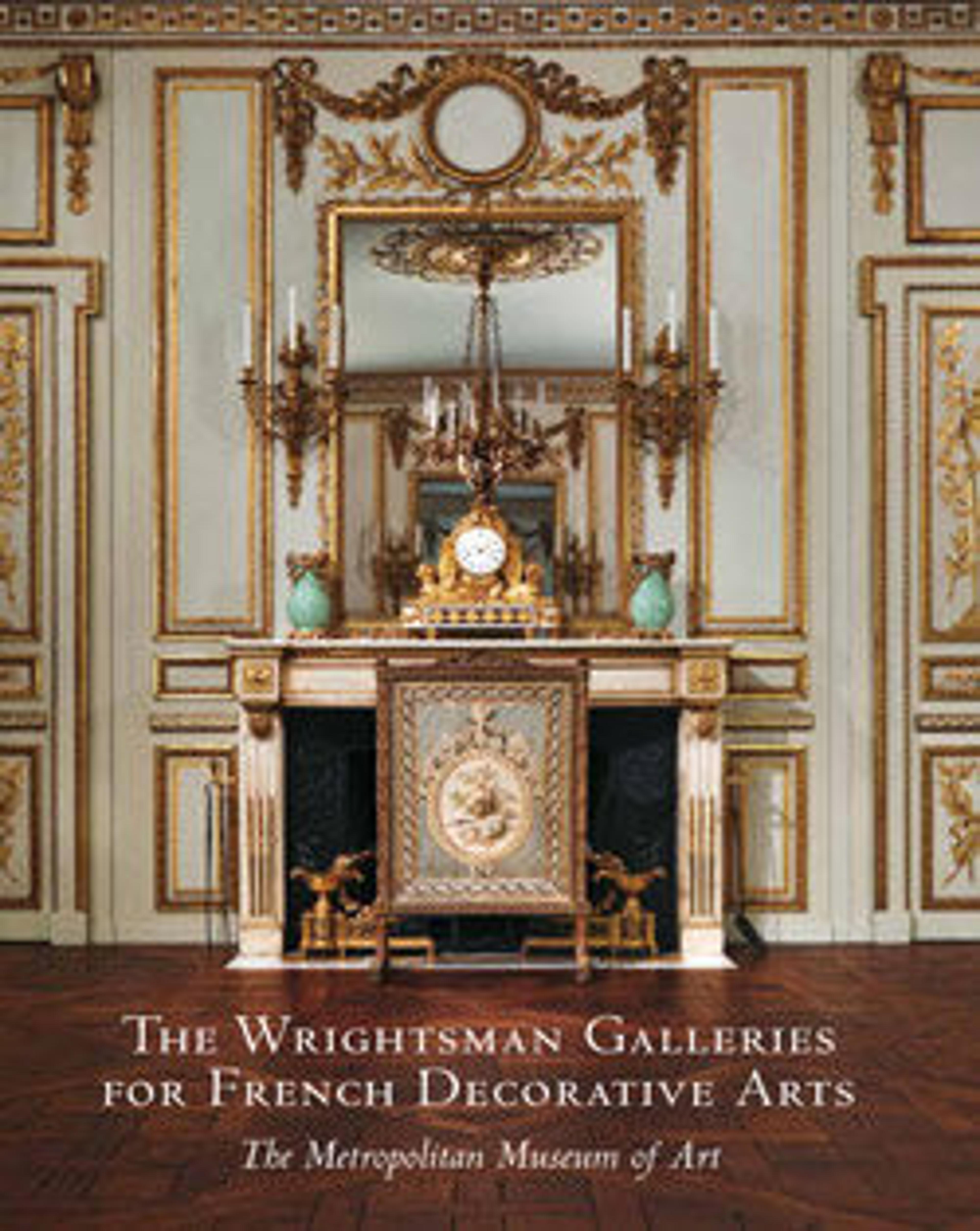Briefcase (portefeuille)
Made in Turkey for the western market, morocco leather briefcases were fashionable in both England and France during the last quarter of the seventeenth and throughout the eighteenth century. This sumptuous example embellished with embroidery in silk and metal thread can be dated to 1763–64 by one of the marks on the gold lock: the crowned letter Z, the assay mark warranting the standard of the metal.
The embroidery on the back displays both a banderole with the words “Ministère des Affaires Étrangères” (Ministry of Foreign Affairs) and the coat of arms of César-Gabriel, comte de Choiseul-Chevigny and later duc de Praslin (1712–1785). This nobleman enjoyed a successful military career before undertaking a political one. He served as foreign minister of France from 1761 to 1766 and in that capacity signed the Treaty of Paris, ending the Seven Years’ War, which for France entailed the loss of much of her North American territories to Great Britain. Nevertheless, it is likely that the briefcase was intended to commemorate this event, and perhaps also to celebrate the politician’s elevation to the rank of duke, which occurred in October 1762 ( the ducal crown forms a prominent part of the coat of arms).
In his memoirs, Jean-Nicolas, comte Dufort de Cheverny (1731–1802), noted that the duc de Praslin was cold and disagreeable, yet had a passion for literature and found happiness with his mistress, Marie-Anne Botot, known as Mademoiselle Dangeville (1714–1796), who was famed for her roles as lady’s maid at the Comédie Française.
Praslin, a bibliophile as well as a collector of old-master paintings, had only a few years to enjoy the use of his briefcase. Following his resignation as foreign minister, he was appointed to the Ministry of the Navy but was dismissed by Louis XV four years later.
The preparation of the leather and the embroidery of the portfolio may have been done in Constantinople, since there are several similar examples known that bear the name of that city. It was probably lined and finished in Paris, where the escutcheon-shaped, openwork lock was made as well.
The embroidery on the back displays both a banderole with the words “Ministère des Affaires Étrangères” (Ministry of Foreign Affairs) and the coat of arms of César-Gabriel, comte de Choiseul-Chevigny and later duc de Praslin (1712–1785). This nobleman enjoyed a successful military career before undertaking a political one. He served as foreign minister of France from 1761 to 1766 and in that capacity signed the Treaty of Paris, ending the Seven Years’ War, which for France entailed the loss of much of her North American territories to Great Britain. Nevertheless, it is likely that the briefcase was intended to commemorate this event, and perhaps also to celebrate the politician’s elevation to the rank of duke, which occurred in October 1762 ( the ducal crown forms a prominent part of the coat of arms).
In his memoirs, Jean-Nicolas, comte Dufort de Cheverny (1731–1802), noted that the duc de Praslin was cold and disagreeable, yet had a passion for literature and found happiness with his mistress, Marie-Anne Botot, known as Mademoiselle Dangeville (1714–1796), who was famed for her roles as lady’s maid at the Comédie Française.
Praslin, a bibliophile as well as a collector of old-master paintings, had only a few years to enjoy the use of his briefcase. Following his resignation as foreign minister, he was appointed to the Ministry of the Navy but was dismissed by Louis XV four years later.
The preparation of the leather and the embroidery of the portfolio may have been done in Constantinople, since there are several similar examples known that bear the name of that city. It was probably lined and finished in Paris, where the escutcheon-shaped, openwork lock was made as well.
Artwork Details
- Title:Briefcase (portefeuille)
- Lock maker:Probably by Jacques Lourdière (master 1746–after 1768)
- Date:1763–64
- Culture:Turkish and French
- Medium:Red morocco leather embroidered with gold thread and silk, fitted with gold lock, lined with green silk; gold
- Dimensions:L. 17-11/16 x W. 13-1/8 x D. 2-1/2 in. (45 x 33.3 x 6.3 cm.)
- Classification:Natural Substances-Leatherwork
- Credit Line:Gift of Mrs. Charles Wrightsman, 2001
- Object Number:2001.653
- Curatorial Department: European Sculpture and Decorative Arts
More Artwork
Research Resources
The Met provides unparalleled resources for research and welcomes an international community of students and scholars. The Met's Open Access API is where creators and researchers can connect to the The Met collection. Open Access data and public domain images are available for unrestricted commercial and noncommercial use without permission or fee.
To request images under copyright and other restrictions, please use this Image Request form.
Feedback
We continue to research and examine historical and cultural context for objects in The Met collection. If you have comments or questions about this object record, please contact us using the form below. The Museum looks forward to receiving your comments.
